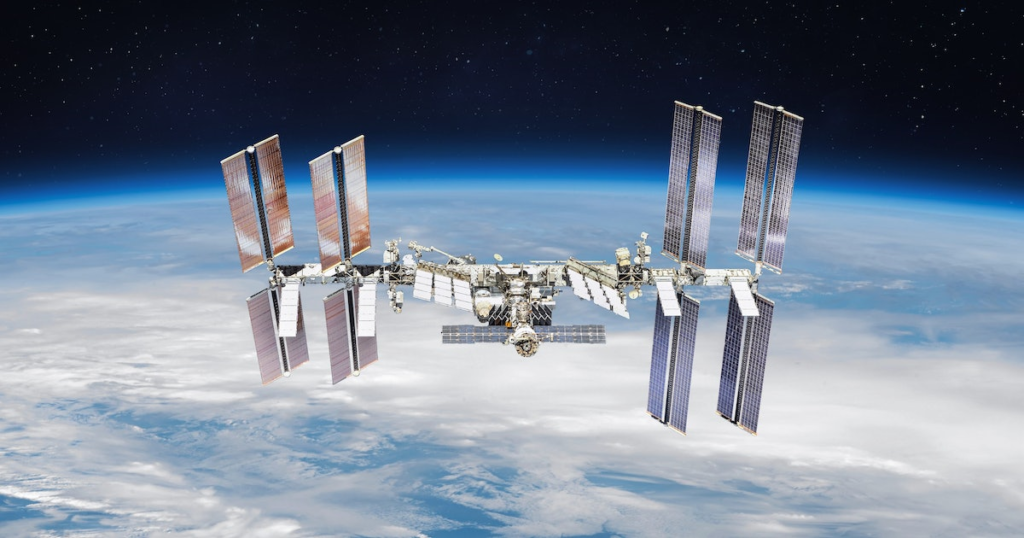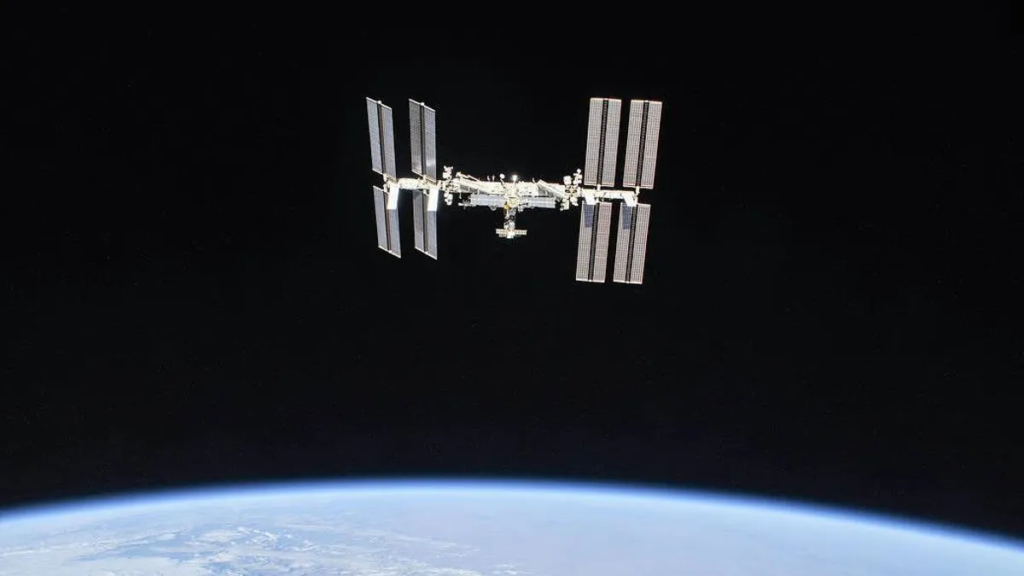
NASA Needs Help To Deorbit The International Space Station
Despite the International Space Station’s two-plus decades of operations and mission support, NASA has made up its mind and plans to retire it. The continued cost to upkeep the station combined with future commercial expectations are some of the main reasons why it will be decommissioned. However, the process of deorbiting a 357-foot or 108-meter station is not very easy.
This especially is the case when you consider that the station needs to burn up over a desolate area as some fragments will survive re-entry. In order to safely and in a controlled manner push the ISS out of orbit, NASA requires a de-orbit vehicle. The agency is now turning to the commercial industry for possible vehicles and spacecraft capable of the job.
With an expected retirement date in 2030, the options could include SpaceX, Northrop Grumman, and a few others. Here I will go more in-depth into this new contract opportunity, how they plan to deorbit such a massive structure, the end of the ISS, and more.
The Deorbit Vehicle

The International Space Station costs about $3 billion per year for NASA to operate, which equates to roughly a third of the human spaceflight budget, according to the agency’s Office of the Inspector General. The agency also expects multiple commercial options to be available by 2030 including Orbital Reef, Axiom Station, etc. With the exception of Roscosmos, the other partners have agreed to remain on station with NASA until 2030. Russia will withdraw no earlier than 2028 to pursue its own space exploration plans.
As far as how they plan to bring the station down, its quite a complex process. NASA was quoted saying, “The primary objective during space station deorbit operations is the responsible re-entry of the space station’s structure into an unpopulated area in the ocean. The chosen approach for safe decommissioning is a combination of natural orbital decay, intentionally lowering the altitude of the station likely using current propulsive elements, and then execution of a re-entry maneuver for final targeting and to control the debris footprint. This final maneuver is expected to require a new or modified spacecraft using a large amount of propellant” they said.
Due to the high propellant requirement of this final maneuver, the Earth’s natural atmospheric drag will be used as much as possible to lower station’s altitude while setting up deorbit. Once all crew have safely returned to Earth, and after performing small maneuvers to line up the final target ground track and debris footprint over an uninhabited region of the ocean, space station operators will command a large re-entry burn, providing the final push to ensure safe atmospheric entry into the target footprint.
As this plan highlights, they need a dedicated de-orbit vehicle with a decent amount of thrust and additional propellant. About a week ago the agency announced that they are asking U.S. industry for proposals to create a “space tug” for removing the International Space Station from orbit.
To maximize value to the government and enhance competition, the acquisition will allow offerors flexibility in proposing Firm Fixed Price or Cost Plus Incentive Fee for the Design, Development, Test and Evaluation phase. The remainder of the contract will be Firm Fixed Price. They pointed out that in a years-long effort, NASA and its partners studied deorbit requirements and previously developed a preliminary strategy and action plan that evaluated the use of multiple Roscosmos Progress spacecraft to support deorbit operations. These efforts now indicate a new spacecraft solution would provide more robust capabilities for responsible deorbit. To initiate the development of this new spacecraft, NASA released the request for proposal.
It will be a new spacecraft design or modification to an existing spacecraft that must function on its first flight and have sufficient redundancy and anomaly recovery capability to continue the critical deorbit burn. As with any development effort of this size, the USDV will take years to develop, test, and certify. In terms of what companies will propose ideas, there are a few different ideas. Some believe that SpaceX could alter a crew Dragon spacecraft and use that vehicle as the space tug. Even Starship theoretically could be ready by 2030 and an option. All this being said, NASA might be more interested in other hardware or vehicles that can already consistently reach orbit.
ISS Retirement

When asked why the agency is retiring the ISS, they responded, “The International Space Station Program has maintained a continuous human presence aboard the microgravity laboratory for more than 22 years with assembly missions starting in 1998. Throughout the years, NASA and its international partners have worked together to operate, maintain, and upgrade parts of station. The technical lifetime of the station is limited by the primary structure, which includes the modules, radiators, and truss structures. The lifetime of the primary structure is affected by dynamic loading (such as spacecraft dockings and undockings) and orbital thermal cycling.
This being said, the ISS is also now the busiest it has ever been. In a report released in early 2022 titled, International Space Station Transition report, the agency went over the full plans and decision to retire the station. In one quote they say, “Today, with commercial crew and cargo transportation systems online, the ISS is busier than ever. The ISSNL, responsible for utilizing 50 percent of NASA’s resources aboard the ISS, hosts hundreds of experiments from other Government agencies, academia, and commercial users to return benefits to people and industry on the ground.”
They went on to say, “NASA has also signed agreements with three U.S. companies (Blue Origin of Kent, Washington; Nanoracks LLC of Houston, Texas; and Northrop Grumman Systems Corporation of Dulles, Virginia) to develop commercial destinations in space that go directly to orbit, i.e., free-flyers.” These stations along with Axiom are supposed to be the future for NASA.
Focusing on the plan to deorbit, NASA had a few different options but decided that method was the best. One option they considered was raising the station’s orbit. However, they explained that the space station flies at an altitude where Earth’s atmosphere still creates drag, requiring regular re-boosts to stay in orbit. The station operates in low Earth orbit above 400 km in altitude and has a mass of more than 430,000 kg. Depending on solar activity, the station’s orbital lifetime (the amount of time before the station would naturally re-enter due to atmospheric drag alone) at this altitude is roughly one to two years. Decommissioning by boosting an object to a higher “graveyard” orbit to extend orbital lifetime is often done with smaller satellites operating near geostationary orbits (~36,000 km in altitude). They were quoted saying, “This is not a realistic target for space station decommissioning because of the large mass of the space station and distance from its operational altitude to a “graveyard” orbit. Existing propulsive assets (spacecraft) do not have the capability to raise the space station’s altitude to such a high target.
With current capability, it would be possible to raise the station’s altitude enough to slightly extend the orbital lifetime, but not escape low Earth orbit. This disposal method carries a high risk to future operations in low Earth orbit since the station could not be refueled for debris avoidance maneuvers. A debris strike on a space station poses a critical risk to astronauts, could render the station uncontrollable, or create additional debris that would present a risk to other missions. Alternative propulsive methods to escape Earth’s gravitational pull have been explored, but these options would require new hardware, a large amount of additional propellants, and would impose large additional cost burdens for the development, test, and deployment of these methods. Ultimately, they believe that this decommissioning strategy would only increase the risk of the station being struck by orbital debris and delay the uncontrolled re-entry of the space station to a later date.
NASA also made it clear that the deorbit would need to be controlled and not random. A natural orbital decay of the space station with a random re-entry cannot ensure that any surviving debris lands in a remote, unpopulated area. The risks to the population associated with an uncontrolled re-entry for the space station are not acceptable they said. A propulsive maneuver is required to mitigate risk to people and property on Earth and ensure a controlled re-entry, targeted into a remote, uninhabited area in the ocean. A graph of the planned deorbit shows the slow lowering of the station’s altitude until around 2031. Eventually, after performing maneuvers to line up the final target ground track and debris footprint over the South Pacific Oceanic Uninhabited Area (SPOUA), the area around Point Nemo, ISS operators will perform the ISS re-entry burn, providing the final push to lower ISS as much as possible and ensure safe atmospheric entry. At that point, any remaining debris that survived reentry would fly into the ocean.
Conclusion
NASA is looking to companies to provide a reliable and powerful deorbit vehicle for the International Space Station. The agency has decided that a station deorbit is the best option and needs this technology to safely remove it. We will have to wait and see how it progresses and the impact it has on the space industry.
Did some math. The delta-v needed to deorbit the ISS is 336 m/s. ISS weighs 420000 kg. If you used a Merlin vacuum engine to impart that delta-v you would need 48,908 kg of propellant. The max payload of Falcon Heavy to LEO is 63,800 kg. So, one solution would be to place an old (and empty) Dragon capsule on a Falcon Heavy, launch it to the ISS, dock it with the second stage still attached, and then fire the second stage engine to deorbit. There would be 0.24 gees of acceleration. I don’t think that would be a problem if the station was prepared – perhaps by over-pressurizing it to stiffen it a bit. Seems quite doable for roughly the cost of a Falcon Heavy launch.